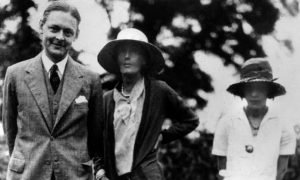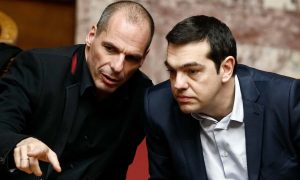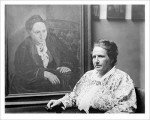2017: Last Year’s Reading
I’ll forego the annual end-of-the-year requisite editorializing about the “decline of reading” in favour of a quick reconnoitre of the cultural battlefield and other book remainder bins. Once we’ve got the mise(ry)-en-scene in focus, I can go on to mention a few books that caught my attention last year.

Book World closes.
The year ended with a somber report from the American heartland about the Christmas-season closure of Book World, the fourth-largest bookstore chain in the U.S. Founded in 1976, the 45-store chain, located mainly in upper Midwestern states, reported sharply reduced sales in mall shops last year, and then announced its sudden liquidation in the face of the trend toward online shopping. As noted in the bookstore chain’s obituary, “readers are increasingly ordering… books online, getting them delivered with their clothes and peanut butter and diapers.” Bookstore sales, according to the U.S. Census Bureau, are down some 40 per cent from a decade ago. Nor is it clear that online book shopping is making up for the drop in store sales. (David Streitfield, “Bookstore Chains, Long in Decline, Are Undergoing a Final Shakeout,” New York Times, Dec. 28, 2017).
A fortnight before the Book World closure, an Arts Council England report declared, as a Guardian headline put it, “Literary fiction in crisis as sales drop dramatically.” The British report “found that print sales of literary fiction are significantly below where they stood in the mid-90s, and that the price of the average literary fiction book has fallen in real terms in the last 15 years.” As a result of “collapsing sales, book prices and advances,” that means that fewer and fewer writers “can support themselves through writing alone.” The report also suggests that the rise of “cheap and easy entertainment” is a big factor in the decline of serious reading. “In comparison with our smartphones, literary fiction is often ‘difficult’ and expensive: it isn’t free and it requires more concentration than Facebook or Candy Crush,” the report’s authors write. Candy Crush?? (Alison Flood, “Literary fiction in crisis as sales drop dramatically, Arts Council England reports,” The Guardian, Dec. 15, 2017.)

Book buying is down.
Looming above the business stats, like a dark non-digital cloud, there’s a larger cultural question, one that goes well beyond the familiar arguments about online-vs.-stores, print-books-vs.-electronic-reading-devices, and “literary fiction” (a rather oxymoronic category) versus… well, whatever the contrasting catregory is – it happens to be “commercial fiction” (all those thrillers, fantasy sagas, quasi-porn-50-Shades-of-Whatever, and the like).

T.S. Eliot, Virginia Woolf, Vivian Eliot.
I had a recurrent flash of the changing cultural context the other day as I was reading Bill Goldstein’s The World Broke in Two: Virginia Woolf, T.S. Eliot, D.H. Lawrence, E.M. Forster and the Year That Changed Literature (2017). Goldstein’s book is a pop literary history celebrating the annus mirabilis of 1922, when “modernism” changed both the way stories were told and our understanding of contemporary life. It was the year that T.S. Eliot published his landmark long poem, “The Waste Land,” and James Joyce’s Ulysses appeared. It was also the year when Virginia Woolf began work on Mrs. Dalloway, E.M. Forster returned to the novel after a decade’s absence by resuming composition of A Passage to India, and the first volume of Marcel Proust’s In Search of Lost Time was translated into English, strongly impacting the sensibility of much of English-language writing. Goldstein’s book is one of those non-academic, slightly frothy accounts – entertaining, but also intellectually sound — of the lives and thoughts of a crucial circle of people who shaped our sense of the modern world.
The World Broke in Two is reminiscent in tone of one of last year’s intellectual best-sellers, Sarah Bakewell’s At the Existentialist Café: Freedom, Being, and Apricot Cocktails (2016). Like Bakewell’s book, it’s also — as I noted to a friend — the sort of book mainly of interest to those who read books – a diminishing lot, I duly added. It’s not just that most people outside the literary realm haven’t heard of Joyce, Woolf, Proust and the others, or the notion of “modernism” as an intellectual game-changer. It’s reading itself that’s at issue.
By way of contrast to books, there’s still fairly widespread public recognition and discussion of movies and narrative television, enough so that various urgings to keep up with (or even “binge-watch”) Game of Thrones or House of Cards and the dozens of other upscale TV series (a genre that began two decades ago with The Sopranos), is a common enough occurrence in daily life. So is the advice to check-out such filmic spectacles as Star Wars: The Last Jedi or the more esoteric Call Me By Your Name – and talk of such matters can be regarded as features of a general non-specialized culture. But when’s the last time that someone insisted that there was a serious book that you just had to read — something weightier, that is, than a Harry Potter YA installment?
The book world is increasingly confined to the “book world,” rather than being part of a world of general culture, as it once was. And, as noted above, you can no longer find that book sub-culture at the not-so-aptly named Book World chain. We take it for granted that genres like “modern dance,” “New Music,” and maybe even “poetry” are enclosed sub-cultures, whose works and leading figures are only available to and known by specialized audiences. Oddly, few people seem to be aware of the slight, but tectonic, cultural shift in which books are less part of what I’m calling the general culture, and much more part of a reduced “book world.” Non-readers, who have always constituted a mass-culture majority, don’t notice because they’re non-readers, and anyway, they’re busy looking at their smartphones, while the “saving remnant” of readers doesn’t really want to notice the shift (and they, too, are busy looking at their digital devices). Still, the world of books remains a sizeable “world,” and it has lots of prizes, festivals, money, etc., but it’s not really a public world or integral to a general culture any longer.
2.

Yanis Varoufakis (l.), Greek prime minister Alexis Tsipras (r.)
Based in Berlin, as I am, European political and cultural affairs are topics of natural interest to me. In 2017, the European political book that most engaged readers was former Greek finance minister Yanis Varoufakis’s Adults in the Room: My Battle with the European and American Deep Establishment (2017), his surprisingly fast-paced memoir of fighting against fiscal austerity programs in the bureaucratic labyrinth of the European Union (EU). Oddly, when an American edition appeared some six months after its European publication, despite favourable reviews in the New York Times, the Washington Post, and the Los Angeles Review of Books (I wrote the latter), it was largely greeted with indifference. Maybe the American disinterest in European affairs is a result of bombastic President Donald Trump sucking the air out of every room and conversation in the U.S., as well as coarsening the culture, one tweet at a time. In any case, Adults in the Room was one of the missed reading opportunities of the year.
Other European-based books of interest includes former Washington Post European editor William Drozdiak’s gloomy Grand Tour of major European capitals, Fractured Continent: Europe’s Crises and the Fate of the West (2017), a survey of worst-case scenarios depicting the fragile state of the EU under the strains of right-wing populism. If I may be permitted a moment of immodesty, I’d add to the list my own Letter from Berlin (2017), a set of linked-essays that add up to a political-cultural chronicle dealing with terrorism, the rise of populism as represented by the Brexit referendum and Trump’s election, and cultural matters ranging from “fake news” to debates about the shifting nature of reality. Finally, for those seeking a deeper, but succinct account of the catchword of the era, Jan-Werner Muller’s What Is Populism? (2016) is particularly helpful.

Peter Pomerantsev.
Since 2017 marked the centennial of the Russian Revolution, a slew of books about Soviet and post-Soviet history offered guidance to a sober assessment of the once-Utopian vision of communism. Among those of note: China Mieville’s October: The Story of the Russian Revolution (2017) enthusiastically emphasizes the narrative aspects of what was a chaotic, contingent and not at all inevitable triumph by the Russian Bolsheviks and Vladimir Lenin. A new edition of Sheila Fitzpatrick’s The Russian Revolution (2008; 2017) correctly and necessarily takes the story through the Stalinist Terror of the late 1930s, without which it’s impossible to understand the tragedy of the revolution. By the way, a little-known recent book which is something of a non-fiction literary work in itself is German sociologist Karl Schlogel’s Moscow, 1937 (2008; English tr. 2012), an almost pointillist portrait of the horror. Finally, the best book on the bizarre contemporary Russia of Vladimir Putin remains Peter Pomerantsev’s Nothing Is True, Everything Is Possible: The Surreal Heart of the New Russia (2014). It’s a book that has been insufficiently read by analysts (usually on the left) who want to normalize “Ras-Putin’s” regime in order to keep the focus on the evils of American imperialism (of which there is no shortage, of course, but that doesn’t excuse willed ignorance about post-Soviet authoritarianism).
Speaking of the left, one of the striking political phenomena of the last year in North America has been the effort to silence various invited speakers to U.S. and Canadian campuses who are considered (by leftist and “identity politics” groups) to be too right-wing, which has produced the corollary odd sight of rightists wrapping themselves in the flag of “free speech.” Two books, with coincidentally the same title, Free Speech on Campus (2017) attempt to address the paradoxes of who should be allowed to speak and who should, as the impolite acronym puts it, STFU.
The better of the two similarly-themed books is by two University of California law professors, Erwin Chemerinsky and Howard Gillman. Their version of Free Speech on Campus is distinguished by a historical account of free speech that recalls, for example, when 19th century abolitionist opponents of slavery were under legal and physical attack in an effort to silence their views; and leftists of various stripes were barred from teaching during the McCarthy era. It’s also free of sentimental free speech rhetoric, and it offers a coherent set of arguments to buttress the authors’ support of a pro-speech position.
Sigal Ben-Porath is a professor in the education faculty at the University of Pennsylvania. In her Free Speech on Campus, one gets the sense that her heart is in the right place, but that perhaps she’s sat on one too many committees seeking a balance between “diversity,” (and offenses to its “dignity”) and the old-fashioned notion that higher education, to say nothing of democracy itself, is committed to challenging ideas and frank discussion. Her prose (and thinking) tends to be a bit fuzzier than the Chermerinsky and Gillman volume, but both books are brief and more or less on the side on the angels.
What both books make clear is that the present generation of student and faculty Social Justice Warriors is epistemologically far removed from earlier generations’ commitments to open debate, and that the politically correct types are currently devoting an inordinate amount of tactical attention to the old Communist Party slogan that “fascists have no right to speak.” The obvious problem is: who gets to define who’s a “fascist”? Most of the people who have been targeted on campuses are not in fact, fascists, and most of the attacks on campus speakers have politically backfired, and reaffirmed ordinary citizens’ doubts about what goes on when the commanding heights of the faculty lounge are seized by ideologues.
Tangentially related to North America’s campus confrontations have been literary battles in my country of citizenship, Canada. I’ll skip the details of debates about “cultural misappropriation,” the bona fides of Canadian novelist Joseph Boyden, and the mess at the University of British Columbia where the 2016 firing of Creative Writing Department chair Steven Galloway (author of The Cellist of Sarajevo) remains a flashpoint one year after the university’s secretive handling of the case.
When prominent literary figures across the country called for “due process” for the accused, it sparked a tenacious reaction from mostly feminist anti-“rape culture” profs and students at Canadian universities coast-to-coast. Not content with Galloway’s dismissal, they demanded that the literati remove their names from their “due process” letter and take down their “UBCAccountable” website on the grounds that it caused “epistemological violence” to potential victims of sexual assault. Whether the notion of epistemological violence makes any sense or is metaphysical woo-woo produced reams of writing in 2017 which we’ll allow to go unreviewed here. Instead, in this reading summary, what stands out are two rather unsatisfactory books about Canadian literature.
Alex Good’s Revolutions: On Contemporary Canadian Fiction (2017) was sound on the question of the general decline of reading, but less satisfactory about Canadian writing itself, which critic Good appeared not to like very much. Nick Mount’s Arrival: The Story of CanLit (2017) got favourable attention from mainstream media reviewers, partly because of its novelty — the story of the rise of Canadian writing, from c. 1950 to 1975, has seldom if ever been told. North’s breezy narrative makes Arrival easy reading, but his emphasis on economic determinism – a sort of “field of dreams” if-you-build-it (and give it enough grant money) they-will- come saga – seems to be missing the je ne sais quoi specificity of Canada. I have to admit to taking a perverse pleasure in University of Alberta professor Julie Rak’s lone savage review of North’s book, which appeared in an obscure feminist journal (Julie Rak, “Another Dumpster Fire: An Opinionated Review of Arrival,” Hook & Eye, Nov. 16, 2017). Rak’s dissenting voice is not only opinionated, as advertised, it’s also tendentious, cantankerous, and over-the-top, but, and this is the point, it’s lively and it avoids the blandness and self-congratulation of much Canadian literary history, and successfully argues that CanLit is a contested topic.
I had the sense of reading little fiction, either “literary” or “commercial,” in 2017. I’m pretty sure that’s because of Trump – the outsized American president seemed more fictional than any artist’s nightmare creation could conjure up. Nonetheless, I got to German writer Jenny Erpenbeck’s Berlin-based novel about the up-to-the-minute topic of refugees and immigration (and much more), Go, Went, Gone (tr. 2017). New Yorker magazine literary critic James Wood hailed it as a “magnificent novel,” one that ought to but probably won’t overcome Americans’ ingrained resistance to “foreign” fiction. As well, I read England-based, Canadian-born novelist Rachel Cusk’s Transit (2017), the middle volume of what appears to be a kind of leaning tower trilogy about divorce and recovery, a book that’s garnered considerable interest (and award nominations) for its innovative and oblique narrative technique. Also on my reading list last year was noted English novelist Margaret Drabble’s The Dark Flood Rises (2016), her book about the rigours of old age and what comes after. About death, the 78-year-old Drabble leaves us in no doubt (if we had any doubts in the first place). It’s probably not a great novel, but it’s, as they say, “serviceable,” and it seems pertinent to an aging population.
Among other notable items in last year’s fiction, I found Domenico Starnone’s Ties (2014; tr. 2016), an unusual domestic novel by the well-known Italian writer who’s reputed to be the husband of the best-selling novelist who writes under the name of “Elena Ferrante.” I read Edouard Louis’ The End of Eddie (2014; tr. 2017), the 20-something writer’s debut autobiographical fiction about growing up gay in the grim rust-belt region of working-class France. I was much more taken with a similar but non-fiction meditation, Didier Eribon’s Returning to Reims (2009; tr. 2013). Eribon, the biographer of Michel Foucault, also grows up gay in a part of working-class France that once voted left but now supports the right-wing National Front. However, the focus for Eribon, once he gets to the big city, is not gay, but social class, and his own deeply ambivalent relation to his working-class roots.
Finally, I even managed to read a bit of “commercial” fiction. I found Denis Villeneuve’s film Blade Runner 2049 (the sequel to Ridley Scott’s several decades old original Blade Runner) to be so confusing in terms of authorial motive (the movie seems torn between appealing to rock’m-sock’m 12-year-olds and exploring the adult ambiguities of what makes us human) that I went back to the gritty source, legendary sci-fi novelist Philip K. Dick’s Do Androids Dream of Electric Sheep? (1968) in order to find out what the replicants and Trump have in mind for us in 2018.


